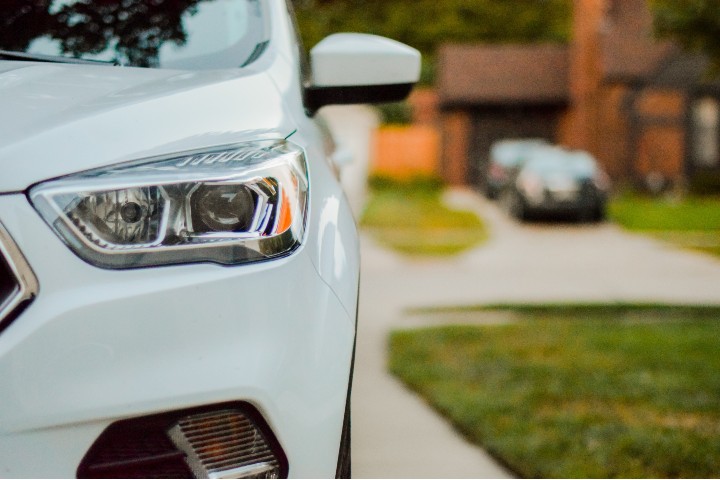Divorce carries along with it a lot of admin and paperwork. There is so much to do to get your life in order again. If you have a joint/household car insurance policy with your spouse (which most married people do), at some point you’ll have to separate your policy from theirs. Unfortunately, single people pay higher insurance rates per person than households do because statistically, married people are less likely to get in auto accidents than single people (although, I would expect married people going through a divorce are even more likely to get in an accident because of all the mental distractions!!!)
If you’re starting a new policy on your own, your rates will likely be higher, because that’s just the reality of starting a new insurance policy. If you’re removing another policyholder from your insurance, on the other hand, your rates may not jump as much (but most likely will at least some) if you added your spouse to your policy as a secondary driver. If you’re moving from a bundled policy (where you had homeowners’ insurance as well for instance), that can cause a rate increase because bundled policies are almost always discounted.
As a result of your separation and divorce, you may find yourself moving to a new neighborhood, city, or state, where insurance rates may be higher or lower, depending on the crime rate, number of accidents in that geographic area, lower security, or other factors. Moving from a house with a garage in the suburbs to an apartment in a more urban area will increase your risk factor to insurers, and thus your premiums.
If you are a parent to a teenage or college age driver, that usually means only one parent will have the child on their policy. Car insurance follows the car, not the driver, so if your child only borrows your vehicle 12 times a year, you may not need to add them to your policy as an additional driver. In reality, when does that ever happen? Hardly ever so it pays to be safe and add your child as a driver. These days, children often get their own car, particularly college kids, so more cars mean a separate insurance situation for each car. If you are the parent with the child on your policy, consider asking the other parent to chip in for this added cost.
I also advise my clients with young adult children that their kids cannot stay on their household car insurance policy if they have moved out and are independent. I find children on insurance policies all the time when I am reviewing financial documents. It’s ok if they are in college and their parent’s home is their primary residence, but if they are on their own, they have to get their own policy. Older kids often move out when there is conflict between the parents (like a divorce.) I find that parents will help their kids out financially by keeping them on their policy when their kids are starting out on their own. This is considered fraud by the insurer and the whole policy could be canceled and losses may not be covered.
A last note regarding insurance policies and divorce: most states have laws prohibiting the cancellation or alteration of insurance policies once divorce proceedings begin. So, any changes you make might have to wait until those proceedings are concluded. This can create some complications when it comes to paying the premium, but the situation will be temporary.
Fortunately, it’s not all bleak when it comes to your car insurance after a divorce. There are some ways you can lower your premiums with a little work:
- Switch cars. Changing your primary vehicle to an older or less expensive model that’s still in good shape could lower your payments significantly. Not only will your car payments probably be lower, and for a shorter period of time, newer, more expensive vehicles tend to cost more in premiums because they’re considerably more expensive to repair in the case of an accident.
- Drive safe. The cleaner your driving record, the more your insurance premiums will go down. You can install tracking devices from your insurer that will send driving data to the insurance company, which may further improve your payment situation.
- Shop around. You should never assume your current policy is the best you can do. You should definitely compare insurance rates and see if you can find a better deal elsewhere.
- Downgrade your insurance. Look at your policy, and if there’s coverage you don’t need (such as comprehensive or collision insurance), consider having them removed from your coverage. Just make sure you don’t remove too much — you still want to be covered in case of an accident.
- Installing a security system or anti-theft device on your car will probably earn you a discount with many insurers.
- Some insurance companies offer discounts to drivers willing to pay an entire year’s premiums upfront. If you have the spare cash on hand, consider saving a few dollars that way.
- You can also decrease your insurance by decreasing the amount you drive. Cutting your miles reduces wear and tear on the vehicle, fuel costs, and your chances of being in an accident, which all adds up to savings for you and decreased risk for the insurance company. Ask your insurer what discounts they offer for less frequent driving.
- Increasing your credit score will also get you a better rate on your car insurance. Easier said than done, in most cases, but it’s something to keep in mind.
- Finally, once things have settled down, you can re-bundle your car insurance with other policies (home insurance, life/health insurance, etc.) to bring your rates down further.

